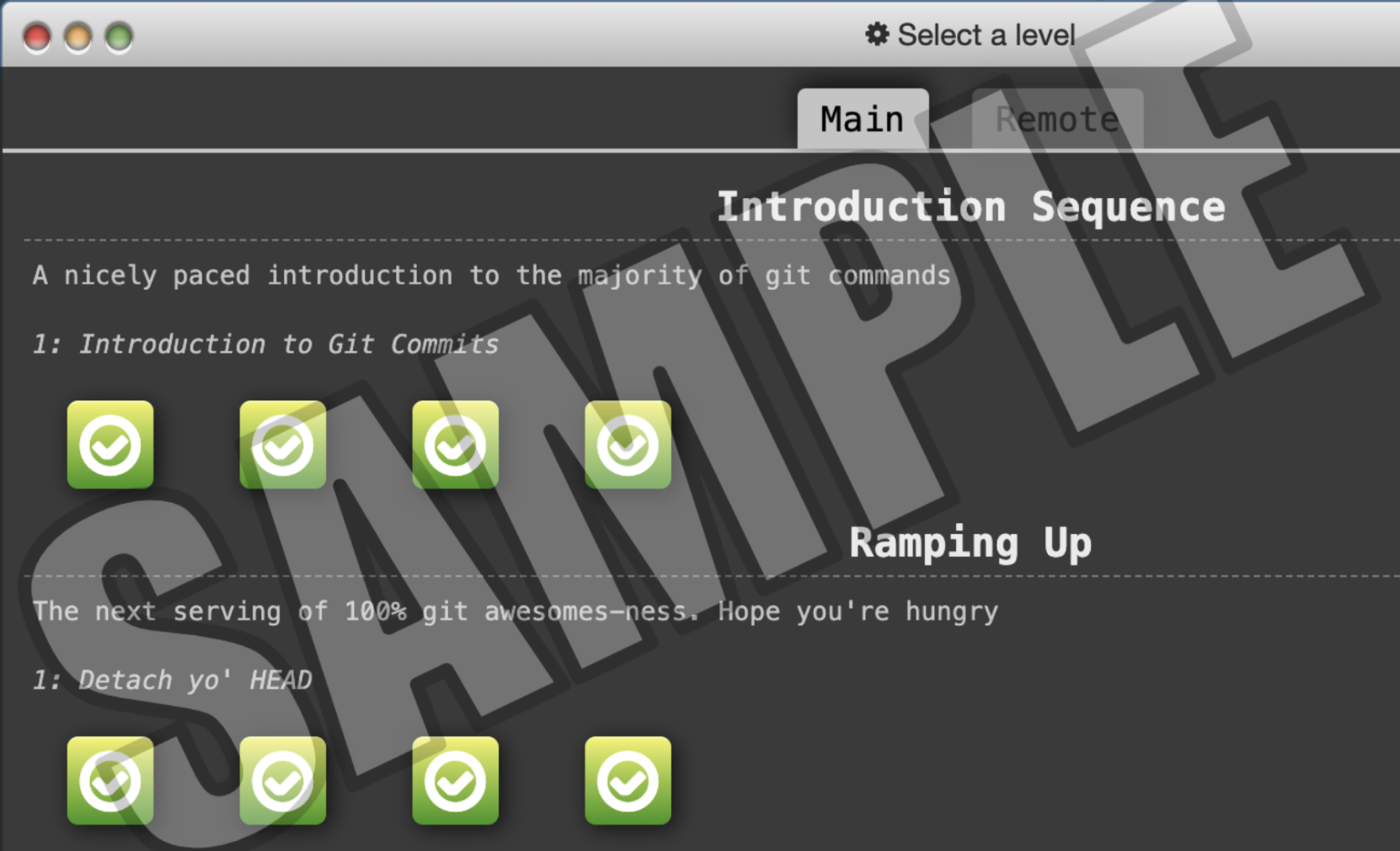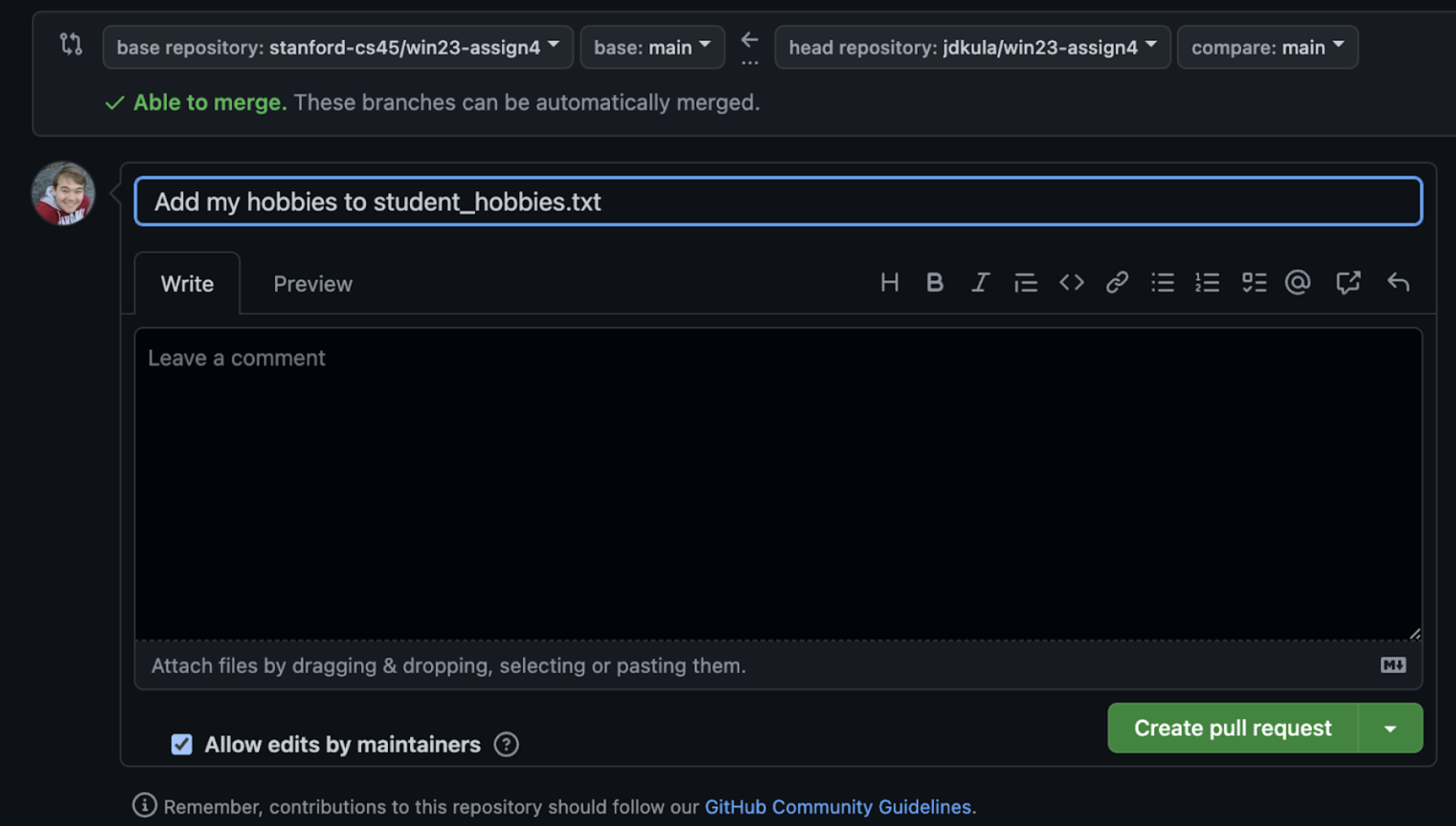Assignment 4: It's git-ting HOT in here!
Table of Contents
- Overview
- Part I: Master
git(1 point) - Part II: Your First
gitRepo - Part III: Practice with GitHub (1 point)
- Feedback Survey (0.5 points)
- Submitting Your Assignment
Overview
This assignment consists of three different components:
- Do a Git tutorial
- Practice using Git from the command line
- Practice using GitHub
We expect this assignment to take 1-3 hours depending on your proficiency level with the tools. If you find yourself unproductively stuck or unproductively struggling, ask on Ed and/or go to office hours!
Part I: Master git (1 point)
In this part of the assignment, you will complete a tutorial to help you master git. The tutorial
can be found here. You should complete the entire Introduction
Sequence and Ramping Up sections*. Once you are done, submit a screenshot of your progress card.
*Note! You can do more if you want to, it’s good practice! But we’re only requiring the first two sections.

Part II: Your First git Repo
Let’s create your first git repository together—we’ll be making a simple rock paper scissors
game in Python, and using a git repository to track changes as we add features.
A git Repository is Born
The first step is to create a directory where you’ll store your files. Go into your Terminal and create a new directory, then initialize your git repository.
Then, let’s create our file– let’s call it rock_paper_scissors.py. Here’s what you want to do.
- While working on the game, commit your changes each time you finish a unit of functionality. For example, a good first commit might be setting up a main function and greeting the user (your “initial commit.”) Another one might be adding an explanation of the rules and how to play; etc. Remember, that your code must compile at each commit.
- Your application should meet the following requirements:
- It should greet the user when it starts
- It should explain the rules of Rock Paper Scissors, which (for those of you who don’t know) are as follows: two players secretly pick one of “rock,” “paper,” or “scissors.” Both players reveal their selection to the other player at once; the winner is chosen based on what the selections are. Rock beats scissors (by crushing them); scissors beats paper (by cutting it); and paper beats rock (by covering it). If both players select the same one, it is a tie.
- It should allow the player to enter in their selection (you can use the
inputmethod). You can assume the user will type inrock,paper, orscissors(all lower-case). - It should print out the computer’s selection, which should be random (hint: you can use
import randomthen dorandom.choice(list)to select a random element from a given list) - It should declare a winner, or a tie.
Extending Our Game
Now that you’ve got a basic game working, let’s extend it to make it just a bit fancier– when we
tie, the computer should rematch us until one of us wins or loses! To extend with our experimental
new feature, let’s create a new branch called no-ties!
After creating this branch, implement your new feature. Feel free to commit as many times as makes sense (e.g. for a first pass implementation, and then again as you fix any bugs). Try to have at least two commits by the end of this.
Once you finish, let’s squash all your new commits into a single one, then fast-forward our
main branch to include the new feature. This will keep the history clean and linear, while still
bringing in all our new work. For this, let’s use the interactive rebase function on your
no-ties branch. Keeping your first commit of your no-ties feature, tell git to squash all the ones
that came after. Then, exit your $EDITOR and watch git do its magic! Once that’s done, switch back
to main and ask git to merge --ff-only your no-ties branch (which now only has a single
commit!) into it.
Part III: Practice with GitHub (1 point)
For this part of the assignment, you will get practice with using GitHub in order to collaborate with other students in the class. We will be using this repository in order to collaborate together.
Student Hobbies
First, we want to compile a list of hobbies for all of the students in the course.
You can do this part from the GitHub online or desktop interface, then by cloning the directory locally.
If you are working locally: You will want to fork
this repository, then clone it on your
computer so you can make edits. Before you start making edits, you will want to pull any new changes
from the remote repository on Github. Remember to create a GitHub account if you don’t already have
one, and log in on the shell with the gh auth login command.
You can fork the repository and clone it to your computer all in one go from the github CLI tool;
simply do gh repo fork stanford-cs45/win23-assign4 --clone=true
Once you have navigated to the repository, you should add a hobby to the list of hobbies found in
student_hobbies.txt and include your SUNet in parentheses. You should also find a hobby that you
share with someone else (i.e. a hobby someone else added that you also enjoy). For the hobby you
share, you should add your SUNet in parentheses, separated by a single space.
Based on the number of people who share the hobby, move the line to the appropriate part of the file where the hobbies shared by the most people are at the bottom of the file and the hobbies shared by the fewest number of people are at the top of the file.
Once you are done, push these changes to your fork of the repository.
For example, the student_hobbies.txt file may look as follows when you first download it:
Surfing (adrazen)
Languages (akshay01)
Drawing (jdkula)Consider a student whose SUNet is karel who enjoys coding and also enjoys languages. After the
student has completed this part of the assignment, the file would look as follows:
Surfing (adrazen)
Coding (karel)
Drawing (jdkula)
Languages (akshay01 karel)Finally, you’ll be submitting a pull request to the shared repository. You can do this from the GitHub Website by going to your forked repository and clicking the “Contribute” then “Open Pull Request” buttons. You’ll get a screen that looks like the following– fill out a title and a comment below, and then click “Create Pull Request”!

Here are some additional instructions from GitHub about creating pull requests, if useful.
Sleuthing for a Fact
We have a text file listing a bunch of facts called facts.txt on the repository— but oh no!! There
are supposed to be 3090 fun facts in the file, but there are only 3089 currently. One must have been
deleted at some point!
Your goal is to find this missing fact and who deleted it! To do this, you can use the
git log and git diff commands to inspect the repository.
To start your sleuthing, you can provide a file name to git log to show only the commits that affected that file. This will give you the commit hashes of all commits that affect it. Do you see any strange or suspicious commit messages?
Once you identify a suspicious commit (or pair), you can use git diff to see what files changed
between two commits. Recall from Part I, if you want to see what a single commit changed, you can
compare a commit with the commit right before it. Recall that you can use a1b2c3^ to refer to “the
commit just before a1b2c3”.
Once you’ve found the missing fun fact, put it in missing_fact.txt – then, place it in with your
rock-paper-scissors game and commit it as an additional file.
Feedback Survey (0.5 points)
Once you have completed the assignment, you can earn an additional 0.5 points by completing our anonymous feedback survey. Given this is the first offering of the course, we want to collect as much feedback as possible to improve the course in the future. You can complete the survey here.
Once you complete the survey, you will receive a
completion code which you should place in a text file named survey.txt. The survey is anonymous so
submitting the completion code is the only way we can verify that you completed the survey. Please
do not share this code with anyone, as that would constitute a breach of the honor code.
Submitting Your Assignment
Once you have finished this assignment, you will need to upload your files to Gradescope. Make sure to upload all files to the Assignment 4 submission page. You should also upload survey.txt if you completed the survey.
Here is what you need to submit for each part:
- Part I: A screenshot of your completion of the required parts of the tutorial. The filename of the
screenshot doesn’t matter, as long as it has a
.pngor.jpgextension. - Part II: Your entire directory containing the Rock Paper Scissors game.
- Part III: On GitHub, make sure you’ve created a pull request with the appropriate changes to the
main repository. On GradeScope, submit a
missing_fact.txtfile that contains the missing fact (in your rock-paper-scissors repo). - Survey:
survey.txt